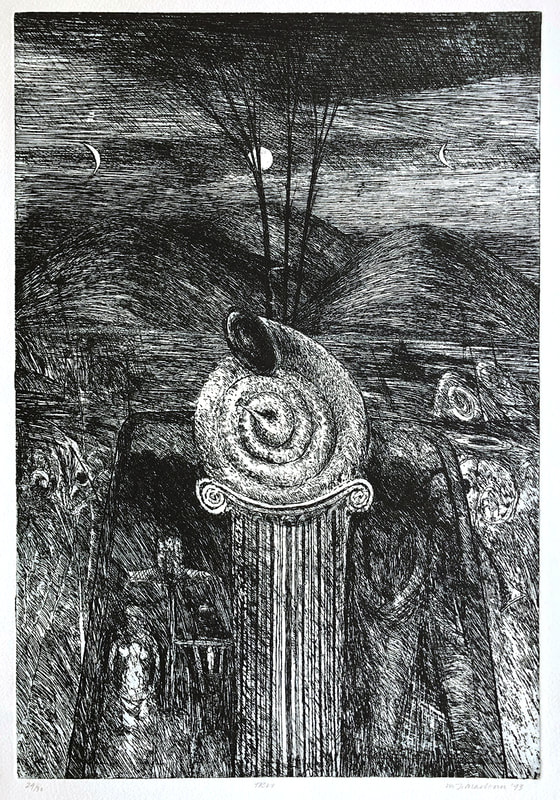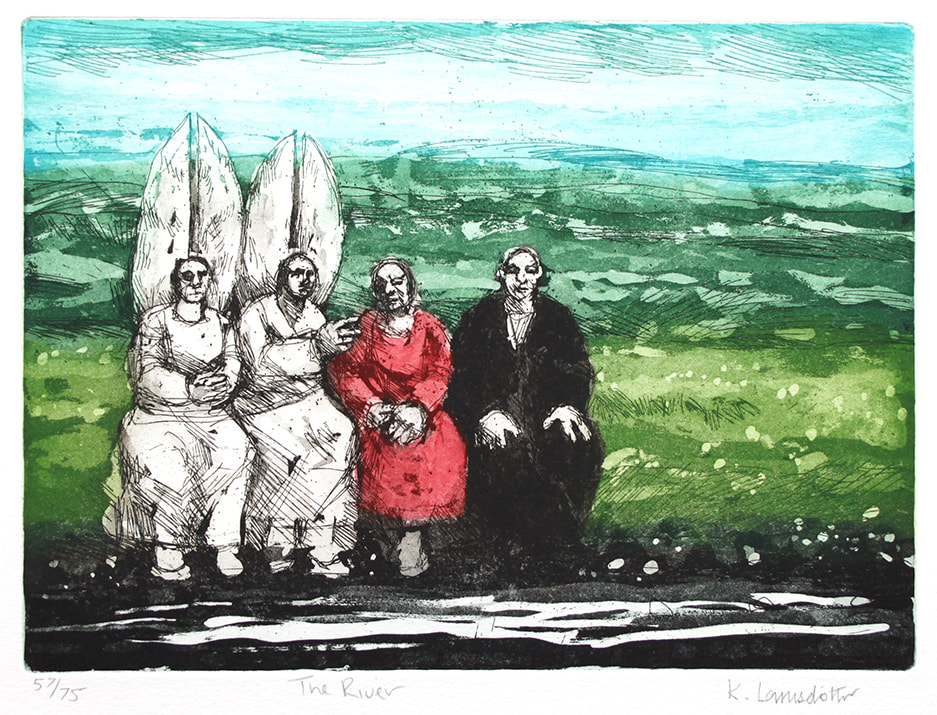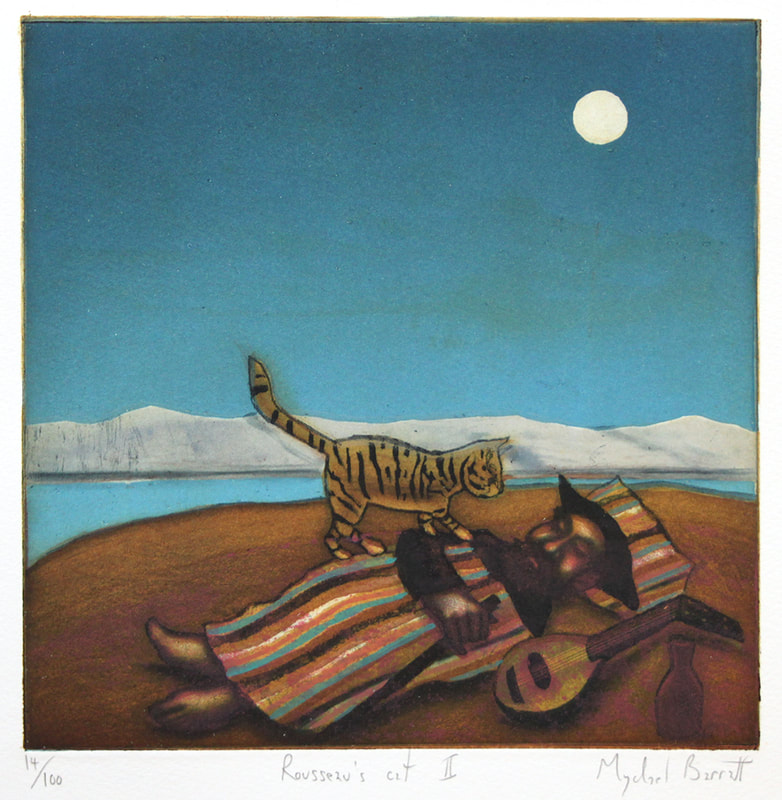Etching & Aquatint
Etching is one of the ‘intaglio’ printmaking techniques, i.e., the ink is transferred out of an incised line under the pressure of a press. It is a skilled and highly technical process and an etched print can take many weeks to complete. Etching starts with a metal plate, usually copper, zinc or steel, which is coated in an acid-resistant wax or ‘ground’. The artist then draws lines into the wax using a needle-like tool exposing the metal underneath. The plate is then immersed in a bath of acid for a set period of time where the acid will erode or ‘bite’ the exact same drawn image into the metal below through the lines which have been exposed with the removal of the wax. The longer the plate is in the acid, the deeper the bitten line, therefore the more ink it will hold and the darker it will print. ‘Stop-out varnish’ can be used on the plate to halt the progress of the acid in order to keep lighter lines or white highlights. The plate will go in and out of the acid bath many times before it is complete.
Tone can be created with the use of a fine dust of acid-resistant ‘aquatint resin’ which is applied to the surface of the plate using heat. When the plate is immersed in acid, the acid will bite all the microscopic areas around each individual particle of resin, and these areas will then hold ink creating the tonal effect. Different tones are produced by ‘stopping out’ successive parts of the plate after each bite in the acid.
The etching is printed by forcing ink into the bitten lines and tonal areas of the plate. The surface of the plate is wiped clean, dampened paper placed on top and then run through an etching press. This forces the ink onto the paper and produces the image. This process has to be repeated for each and every printed image, a time-consuming process.
The etching is printed by forcing ink into the bitten lines and tonal areas of the plate. The surface of the plate is wiped clean, dampened paper placed on top and then run through an etching press. This forces the ink onto the paper and produces the image. This process has to be repeated for each and every printed image, a time-consuming process.
There are two main methods of creating colour etchings. Separate plates can be created for each colour and one colour printed on top of the next. Alternatively, different parts of one plate can be inked up with differing colours using small swabs of muslin or a cotton bud. This is known as ‘la poupée’ technique and results in images with subtle changes between colours.
Etching superseded engraving at the beginning of the 16th century. The engraving process uses a sharp metal tool to mechanically incise a line directly into the surface of a metal plate resulting in a very considered line. In contrast, the etching technique uses acid to create these recessed lines, producing flowing and freely drawn lines and tone.
The Castle Gallery, Inverness, is renowned for its extensive collection of handmade prints from artists who are amongst the leading exponents of original prints in the UK, including many who have been elected to the Royal Society of Painter-Printmakers. We promote original handmade prints because we believe in their superb craftsmanship, aesthetic value and integrity.
The Castle Gallery, Inverness, is renowned for its extensive collection of handmade prints from artists who are amongst the leading exponents of original prints in the UK, including many who have been elected to the Royal Society of Painter-Printmakers. We promote original handmade prints because we believe in their superb craftsmanship, aesthetic value and integrity.


